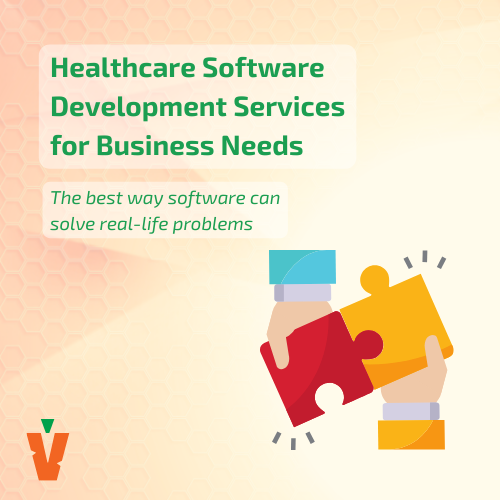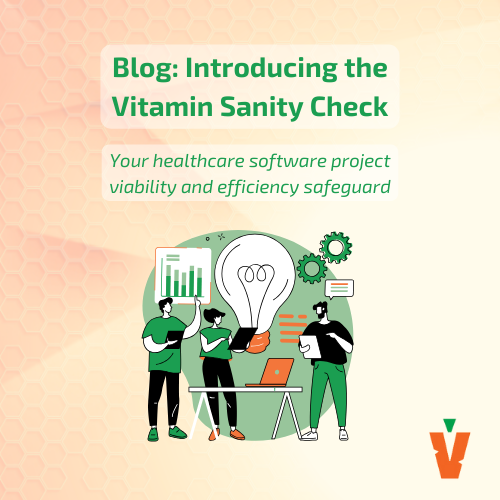From triaging bugs to transitioning from legacy systems, healthcare software implementation is often tedious and error-prone. But you can make it easier with training and documentation — let’s talk about how.
The idea behind demos, walkthroughs, and documentation is to make software deployment as smooth as possible. It preempts questions and mistakes, increasing satisfaction rates.
The secret to successful healthcare software demos and documentation lies in good planning. So, join us to go through the steps to prepare your future users, guaranteeing your latest tech product goes through flawless deployment.
Preparing Healthcare Software Demo
In healthcare tech development, a software demo showcases key features to stakeholders or potential clients. It typically happens in the prototype or beta stage, when the product isn't fully polished but it's already functional enough to give a clear idea of its value and capabilities. We use it for feedback or gauging user interest.
Let’s discuss ways to execute a software demo for sales prospect purposes.
Executing the Demo
The software demo is a concise overview of your healthcare software solution, highlighting key features and their operational impacts. The objective of this step is to display how the system improves efficiency, compliance, or whatever goal you've set for your tech solution, in medical settings.
After the demo, it's good practice to leave time for a short Q&A session. Use this time to clarify features to stakeholders. It's also an opportunity to represent your company in a good light by showing your problem-solving capabilities. The feedback will do wonders for tweaking your solution and preparing for successful software deployment.
Additionally, here are some tips from a Vitamin Software Business Analyst (who has dozens of successful software demos under his belt):
- Prepare for glitches. An outage or technical glitch could leave a negative impression on the customer. Record everything and test the demo environment before taking it before a decision-maker.
- Conduct internal dry runs. Run the software demo internally with various teams (development, sales, support) to gather feedback and identify issues. It’ll let you anticipate questions or possible customer concerns.
- Focus on the most valuable part of the demo. Your product might be half-baked with parts missing, but you’ve developed the main functionality. Highlight ways it solves a business problem for the best results.
- Tailor to the buyer persona. Present the workflow that’s the most relevant to your listener. Use datasets that match what they face in the real world (for example, add doctor’s notes in a platform tailored to doctors).
Preparing Healthcare Software Walkthroughs
Training happens after software deployment to get operators to fully understand the product and teach other employees to use it. A part of the software walkthrough follows a script, and the rest is driven by user questions. You can prepare for both by understanding your solution and buyer persona.
Here’s how a walkthrough for successful healthcare software implementation might look:
Fixed segment covers essential features and workflows. This is the core part of the training that everyone needs to understand. It might include:
- Core functionalities. Show every workflow included in your software solution, from account creation to troubleshooting.
- Back-office view. Navigation, dashboard overview, accessing patient records, scheduling, and data management.
- Inspection and maintenance. Steps to perform regular inspections, log maintenance tasks, and follow up on issues.
The interactive Q&A segment is the time for operators to ask questions. While you can’t prepare for all scenarios, you should be ready to live-demonstrate solutions or workarounds.
.png?width=400&height=220&name=Pro%20tip%20VS%20(2).png)
The software walkthrough resembles a demo, only longer and covering more ground. It uses the same delivery methods: a demonstration, hands-on practice, and a recorded session afterward. This way, you’ll examine typical use cases, provide sample scenarios, and set users up with materials for future reference.
How much hand-holding should you use? It depends on the buyer — if you’re looking to close large deals with one or two accounts, give them extra time and attention. When targeting many future users, record videos and hold occasional live Q&A sessions to save time while ensuring straightforward healthcare software implementation.
Follow these steps to ensure your software walkthrough goes smoothly:
- Structure a narrative. Explain how your software can transform the customer’s operations, whether through easier note-keeping, automatic insurance payments, or a medical feature.
- Highlight differentiators. Emphasize what sets your software apart from other solutions. Display unique features and benefits without bashing competitors — it isn’t a good look. Say something like ‘usually, such software has X feature, but we’ve improved it to be faster/easier to use.’
- Engage your audience. Encourage interactivity and questions during the software walkthrough. Doing so keeps your audience engaged and lets them get hands-on with your solution, which makes them more likely to use it once it’s implemented.
- Have a follow-up plan. Know how you’ll follow up the walkthrough to facilitate healthcare software implementation. Address any additional questions and provide supplementary materials or another session if needed.
Preparing Healthcare Software Documentation
All healthcare software documentation must be understandable and comprehensive. Define your reader personas to tailor your content to them and answer their questions and pain points. For instance, they could be technical support in a hospital, medical administrators, or regulatory compliance officers.
.png?width=400&height=220&name=Pro%20tip%20VS%20(3).png)
Then comes the actual writing, which should be in plain English with as little jargon as possible. Remember — your readers are rarely as tech-savvy as your developers! Make it straightforward for easier healthcare software implementation.
1. Technical Documentation
This part of healthcare software documentation includes system architecture, integration guides, and troubleshooting.
- Start with a high-level architecture diagram outlining the software components and how they interact. Finish with a data flow chart that shows how information moves through the system.
- List all integration points where your software interacts with other systems (EHR, billing, lab systems). Describe the purpose of each integration and how it fits into the workflow.
- Provide API documentation with endpoint definitions, request and response formats, authentication methods, and use examples. Use tools like Swagger to create interactive resources.
- For troubleshooting, list common symptoms (like slow performance or error messages) with step-by-step resolution guides. Match each error code with the suitable resolution steps. Offer diagnostic tools the IT staff can use to troubleshoot.
.png?width=400&height=220&name=Pro%20tip%20VS%20(4).png)
- Create an escalation procedure if users can’t solve a bug or outage. Provide the contact information of your company’s support person assigned to that project (you should have one for every client).
2. User Documentation
The manual offers detailed, role-specific instructions that guide users through the software features. For instance:
- Patient registration, appointment scheduling, billing, and generating reports for admin staff.
- Accessing patient records, updating medical histories, and ordering lab tests for medical staff.
Use screenshots to illustrate each step or design a flowchart for complex workflows.
Then, we have quick guides, which let users quickly find the information they need without navigating through comprehensive manuals. Screenshots, checklists, and references to the complete manual are helpful. Need an example? Here’s how a quick guide could look for a specific user story in a hospital setting:
Patient Registration (Administrative Staff Manual)
Introduction:
Overview of the patient registration process and its importance.
Step-by-Step Instructions:
Step 1: Log in to the HMS.
Screenshot:
Step 2: Navigate to the Patient Registration module.
Screenshot:
Step 3: Click New Patient.
Screenshot:
Step 4: Fill in the required fields.
Screenshot:
Step 5: Click Save.
Screenshot:
Tips and Best Practices:
Ensure all required fields are completed accurately to avoid delays in processing.
Common Issues and Troubleshooting:
Issue: Error message on saving.
Solution: Check for missing fields and correct invalid data entries.
3. Compliance and Security Documentation
Compliance and security documents ensure the healthcare software adheres to relevant legal and regulatory standards. Most importantly, software documentation should include procedures for:
- User authentication
- Incident responses
- Data breaches
- Access controls
- Data encryption
- Physical security
This document serves as your company’s proof of following HIPAA compliance guidelines — and it guarantees you’re keeping patient information secure and private. Add SOC2 compliance documentation, and you double your commitment to data security and integrity. The best way to go about writing it is by addressing the five trust service principles: security, availability, processing integrity, confidentiality, and privacy.
Summary and Next Steps
In health tech, software demos, training, and documentation are crucial for successful implementation. Remember their purpose for the best outcomes:
- Demos allow users to visualize the software’s functionalities and understand its potential impact on their workflows. It also lets you tweak the solution to user needs.
- Effective training programs equip users with the skills to utilize the software efficiently. They reduce the learning curve, minimize errors, and enhance productivity.
- Well-organized software documentation offers guidance on troubleshooting, best practices, and advanced features. It ensures users can leverage the software and fix it up if needed.
Use structured feedback channels and our tips to make healthcare software implementation smooth and error-free. Need help with putting the theory into practice? Schedule a consultation and have one of our BAs walk you through the details.
.png)



